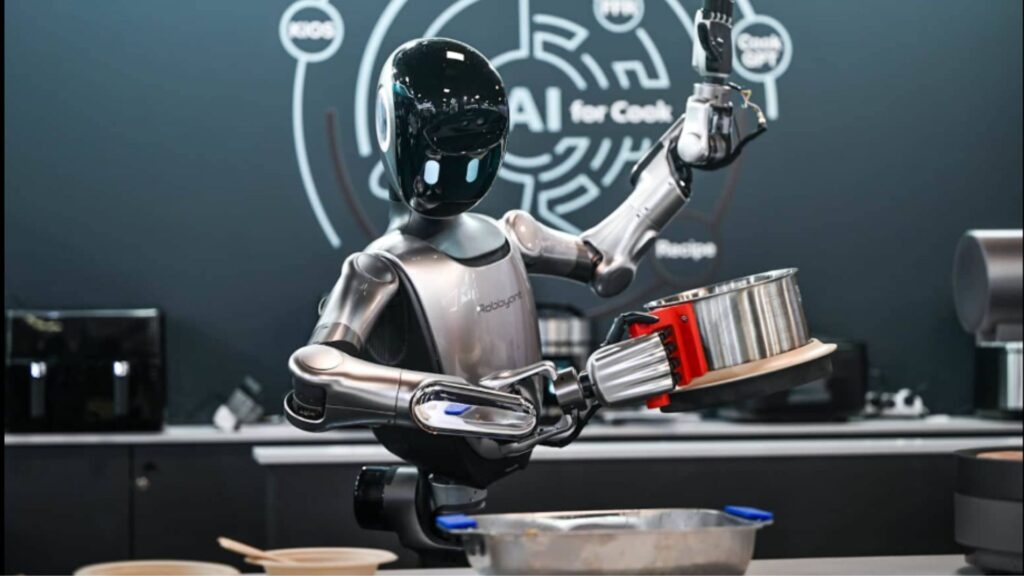
Alibaba on September 11, 2025, unveiled Qwen3-Next, its most advanced artificial intelligence model to date, alongside the debut of its first humanoid robot through affiliate Ant Group. The dual announcements highlight Alibaba’s rapid expansion beyond e-commerce and cloud computing into cutting-edge AI research and robotics applications. Qwen3-Next, featuring over one trillion parameters, represents a major leap in model scale and efficiency, while the R1 humanoid robot showcases the company’s push to commercialize AI-powered physical automation.
These launches underscore China’s broader strategy to achieve technological self-sufficiency amid global competition. Alibaba plans to invest 380 billion yuan (approximately $52 billion) over three years to bolster its AI infrastructure and capabilities, signaling a long-term commitment to rival leading U.S. and European innovators in both large-scale language models and robotics.
Qwen3-Next Sets New Model Efficiency Benchmark
Qwen3-Next builds on Alibaba’s previous Qwen3 architecture with optimizations for long-context understanding and computational efficiency. The model’s trillion-parameter scale places it among the world’s largest AI systems, competing with peers such as OpenAI’s GPT-4.5, estimated at five to seven trillion parameters. In internal MagicBench evaluations, Qwen3-Next demonstrated significant improvements in Chinese-English comprehension, complex instruction following, and multilingual fluency compared to its predecessor, while maintaining inference speeds that reduce compute costs by up to 30% (Alibaba Cloud).
Alibaba attributes the performance gains to a novel mixture-of-experts framework and advanced training algorithms that dynamically allocate computational resources. The company reports Qwen3-Next can process 64K-token contexts with minimal latency increase, enabling new applications in long-form document analysis, real-time translation, and large-scale code generation.
Ant Group’s R1 Humanoid Robot Enters Commercial Trials
Simultaneously, Ant Group showcased the R1 humanoid robot—China’s first commercially demonstrated AI-powered robot—developed by subsidiary Shanghai Ant Lingbo Technology (Robbyant). The R1 model is designed for service roles such as tour guiding, medication management in pharmacies, basic medical consultations, and simple kitchen tasks. At the 2025 Inclusion Conference in Shanghai, R1 organized medication trays and navigated complex indoor routes, illustrating its autonomous task planning via embedded Qwen3-Next inference modules (The Verge).
R1 debuted at IFA 2025 in Berlin, where it prepared shrimp dishes for attendees—despite slow, deliberate movements that highlighted ongoing challenges in robotic dexterity and control. Ant Group emphasizes that R1’s AI-driven autonomy, rather than raw mechanical agility, sets it apart, enabling the robot to adapt to varied service scenarios and integrate seamlessly with enterprise AI ecosystems.
Strategic Implications and Global Competition
The simultaneous release of Qwen3-Next and R1 positions Alibaba at the intersection of two fiercely contested fronts: large-scale language models and humanoid robotics. By matching leading Western models in parameter scale and entering the humanoid market alongside Tesla’s Optimus, Alibaba signals its ambition to become a global AI powerhouse. These moves complement China’s national push for technological independence, as U.S. export controls and trade tensions continue to motivate domestic innovation.
Alibaba’s AI products have achieved triple-digit growth for eight consecutive quarters, demonstrating market traction. With Qwen3-Next and R1, the company aims to expand into new verticals—ranging from automated retail and healthcare support to large-scale content generation—while further integrating AI across its vast cloud and consumer platforms. Continuous investment and iterative improvements will be critical as Alibaba competes with established global leaders in both AI research and robotics deployment.











